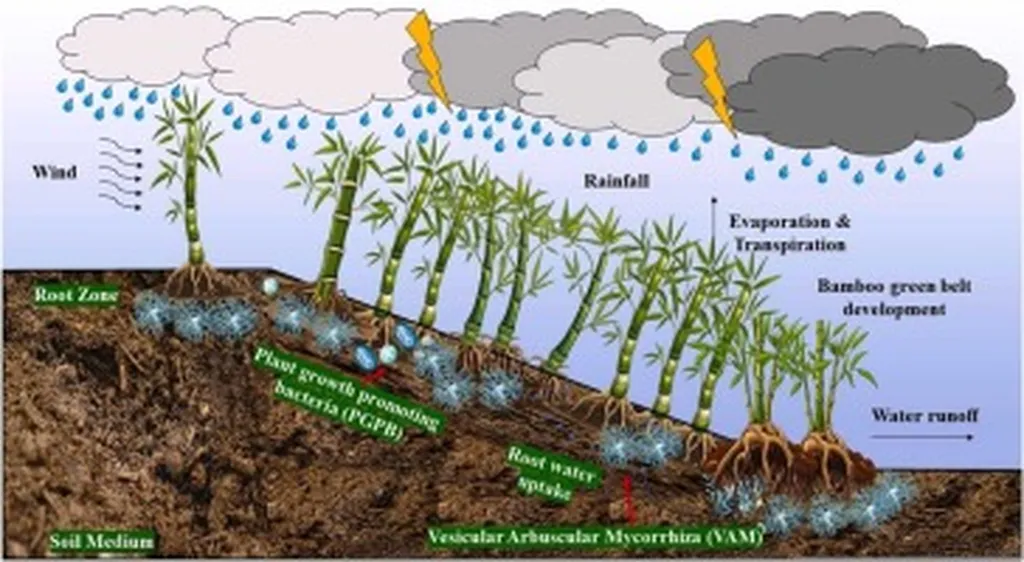In the rugged, climate-vulnerable landscapes of the Eastern Himalayas, a silent hero is emerging: bamboo. A recent study published in the journal *Advances in Bamboo Science* (which translates to *Advances in Bamboo Science* in English) highlights how this versatile plant could be a game-changer for ecological restoration and disaster risk reduction in one of the world’s most fragile regions. Led by Lumgailu Panmei from the Forest Biology and Tree Improvement Lab at Tripura University in India, the research offers a beacon of hope for sustainable land management and climate adaptation.
The Eastern Himalayas is warming at an alarming rate, with erratic precipitation patterns and a high susceptibility to natural disasters. “The region’s rugged topography and poor geological structure make it highly prone to climate change-induced mass wasting phenomena,” explains Panmei. This degradation has led to deteriorated soil characteristics and disrupted hydrological regimes, calling for urgent action.
Enter bamboo bioengineering. Panmei and his team explored nature-based solutions, focusing on soil and water bioengineering (SWBE) with bamboo. They identified several native bamboo species, including Bambusa bambos, B. balcooa, and Dendrocalamus hamiltonii, as crucial for landscape stabilization. These species can be used in crib walls, matting, and integrated into agricultural land-use systems to prevent further degradation.
The commercial implications for the energy sector are significant. Bamboo’s rapid growth and robust structure make it an ideal candidate for sustainable infrastructure development. As the world shifts towards renewable energy, bamboo could play a pivotal role in stabilizing landscapes, reducing disaster risks, and supporting the resilience of energy infrastructure in vulnerable regions.
“Carefully selecting bamboo species within their natural distribution is key to overcoming challenges like cost-effectiveness, durability, and suitability,” Panmei emphasizes. This approach ensures that bamboo-based SWBE efforts align with the United Nations’ Sustainable Development Goal 13, focusing on climate action and strengthening resilience to climate-related disasters.
The research not only provides practical solutions but also sets a precedent for future developments in the field. By integrating bamboo bioengineering into land management practices, the energy sector can enhance its sustainability efforts, reduce environmental impact, and contribute to global climate adaptation goals. As the world grapples with the realities of climate change, Panmei’s work offers a compelling case for the power of nature-based solutions in building a more resilient future.
In the face of climate change, bamboo stands as a testament to the potential of nature-based solutions. As Panmei’s research demonstrates, this humble plant could be the key to stabilizing fragile landscapes and mitigating disaster risks, offering a sustainable path forward for the energy sector and beyond.

